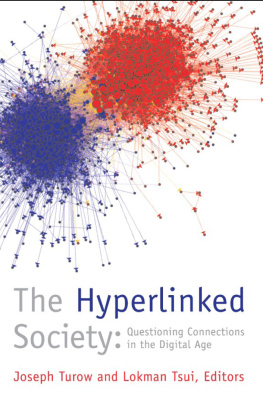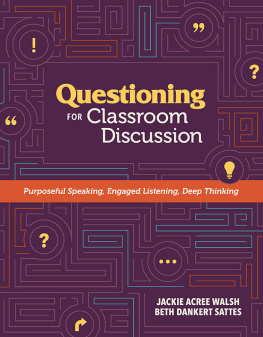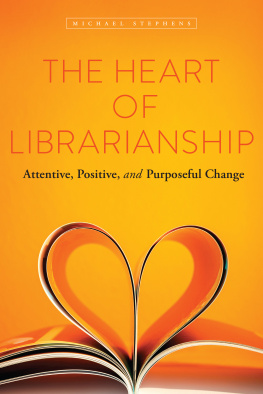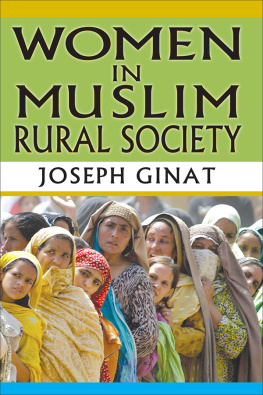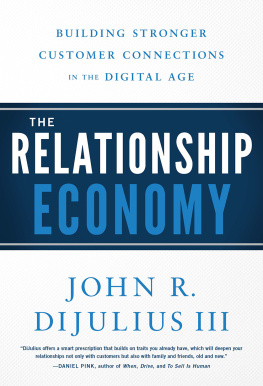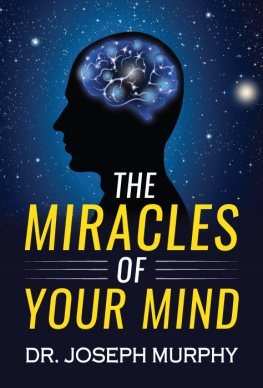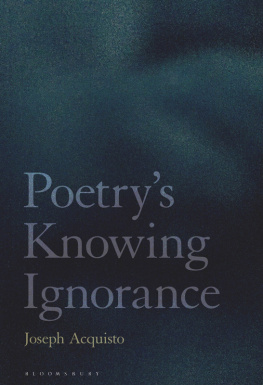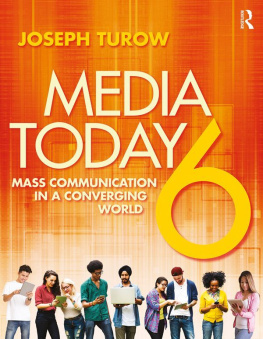Turrow Joseph - The Hyperlinked Society: Questioning Connections in the Digital Age
Here you can read online Turrow Joseph - The Hyperlinked Society: Questioning Connections in the Digital Age full text of the book (entire story) in english for free. Download pdf and epub, get meaning, cover and reviews about this ebook. year: 2018, publisher: The University of Michigan Press, genre: Politics. Description of the work, (preface) as well as reviews are available. Best literature library LitArk.com created for fans of good reading and offers a wide selection of genres:
Romance novel
Science fiction
Adventure
Detective
Science
History
Home and family
Prose
Art
Politics
Computer
Non-fiction
Religion
Business
Children
Humor
Choose a favorite category and find really read worthwhile books. Enjoy immersion in the world of imagination, feel the emotions of the characters or learn something new for yourself, make an fascinating discovery.
- Book:The Hyperlinked Society: Questioning Connections in the Digital Age
- Author:
- Publisher:The University of Michigan Press
- Genre:
- Year:2018
- Rating:4 / 5
- Favourites:Add to favourites
- Your mark:
- 80
- 1
- 2
- 3
- 4
- 5
The Hyperlinked Society: Questioning Connections in the Digital Age: summary, description and annotation
We offer to read an annotation, description, summary or preface (depends on what the author of the book "The Hyperlinked Society: Questioning Connections in the Digital Age" wrote himself). If you haven't found the necessary information about the book — write in the comments, we will try to find it.
Turrow Joseph: author's other books
Who wrote The Hyperlinked Society: Questioning Connections in the Digital Age? Find out the surname, the name of the author of the book and a list of all author's works by series.
The Hyperlinked Society: Questioning Connections in the Digital Age — read online for free the complete book (whole text) full work
Below is the text of the book, divided by pages. System saving the place of the last page read, allows you to conveniently read the book "The Hyperlinked Society: Questioning Connections in the Digital Age" online for free, without having to search again every time where you left off. Put a bookmark, and you can go to the page where you finished reading at any time.
Font size:
Interval:
Bookmark:
 Page i Page ii Page iii
Page i Page ii Page iii Questioning Connections in the Digital Age
Joseph Turow and Lokman Tsui, editors
THE UNIVERSITY OF MICHIGAN PRESS &
THE UNIVERSITY OF MICHIGAN LIBRARY
ANN ARBOR
Copyright by Joseph Turow and Lokman Tsui 2008
All rights reserved
Published in the United States of America by
The University of Michigan Press
Manufactured in the United States of America Printed on acid-free paper
Printed on acid-free paper
2011 2010 2009 2008 4 3 2 1
No part of this publication may be reproduced, stored in a retrieval system, or transmitted in any form or by any means, electronic, mechanical, or otherwise, without the written permission of the publisher.
A CIP catalog record for this book is available from the British Library.
Library of Congress Cataloging-in-Publication Data
Turow, Joseph.
The hyperlinked society : questioning connections in the digital
age / edited by Joseph Turow and Lokman Tsui.
p. cm.
Includes bibliographical references and index.
ISBN-13: 978-0-472-07043-5 (cloth : alk. paper)
ISBN-10: 0-472-07043-6 (cloth : alk. paper)
ISBN-13: 978-0-472-05043-7 (pbk. : alk. paper)
ISBN-10: 0-472-05043-5 (pbk. : alk. paper)
1. InternetSocial aspects. 2. Digital mediaSocial aspects.
I. Tsui, Lokman. II. Title.
HM851.T87 2008
303.48'33dc22 2008002885
ISBN-13: 978-0-472-02453-7 (electronic)
Page v
JOSEPH TUROW
JAMES G. WEBSTER
ALEXANDER HALAVAIS
PHILIP M. NAPOLI
LOKMAN TSUI
ESATER HARGITTAI
SETH FINKELSTEIN
MARTIN NISENHOLTZ
TOM HESPOS
STACEY LYNN SCHULMAN
ERIC PICARD
MARC A. SMITH Page vi
DAVID WEINBERGER
STEFAAN G. VERHULST
JEREMT W. CRAMPTON
LADA A. ADAMIC
MARKUS PRIOR
MATTHEW HINDMAN
JOSEPH TUROW
At the end of the first decade of the twenty-first century, a computer user searching on the Web is unlikely to consider the enormous achievement represented by the highlighted links that beckon from the screen. In 1945, by contrast, Vannevar Bush was excited just to imagine the possibility of a hyperlink. He saw it as opening new gates to human understanding.
An MIT-trained electrical engineer who cofounded Raytheon in the 1920s, Bush headed the Office of Scientific Research and Development during World War II, the office that oversaw the development of radar, the proximity fuse, and the atomic bomb. Afterward, as the main force behind the establishment of the National Science Foundation, he pushed the federal government to fund what he called The Endless Frontier. What was needed, he said, was a scientific establishment that would contribute to the public good by devoting itself to questions of the utmost national and international importance. For Bush, figuring out how to create an instant intertextual link was one of those world-historical questions.
In the July 1945 Atlantic Monthly magazine, Bush asked what sorts of problems would most challenge physicists after the war. His answer: the need to keep track of the growing mass of specialized publications that were, in his opinion, making it impossible for scientists to learn about studies in other fields that might help them solve society's problems. He asserted that our methods of transmitting and reviewing the results of research are generations old and by now totally inadequate. He complained that indexes, the dominant method of pointing people to information, were too limited in their categorization of knowledge and too far from the texts they were citing to be useful as creative sparks. He added that the human mind operates by association. The best way to build knowledge, then, would be to create links between recorded ideas that could be retrieved and passed on.
Page 2This basic idea was not unprecedented. For centuries, the publishers of the Talmud have, for example, linked individual phrases in the text with the opinions of select commentators about those phrases. They have placed the commentators' works in a frame around the Talmudic text, making it easy for readers to go back and forth between one and the other set of writings. Bush's idea, however, was to link all types of textual knowledge in a continual, unfolding manner, and he saw sciencea major cause of the knowledge problemas the source of solutions. He himself conceived of a memex a desk that combined a microfilm reader, screen, special electronic tubes, and a keyboardthat would allow the user to insert code to link any point in a microfilmed document to any other point. The reader could retrieve those connections at will, pass it along to anyone else with a memex, and buy knowledge with prerecorded linkages. It would, he asserted, open a new world of understanding:
Wholly new forms of encyclopedias will appear, ready made with a mesh of associative trails running through them, ready to be dropped into the memex and there amplified. The lawyer has at his touch the associated opinions and decisions of his whole experience, and of the experience of friends and authorities. The patent attorney has on call the millions of issued patents, with familiar trails to every point of his client's interest. The physician, puzzled by a patient's reactions, strikes the trail established in studying an earlier similar case, and runs rapidly through analogous case histories, with side references to the classics for the pertinent anatomy and histology. The chemist, struggling with the synthesis of an organic compound, has all the chemical literature before him in his laboratory, with trails following the analogies of compounds, and side trails to their physical and chemical behavior.
The historian, with a vast chronological account of a people, parallels it with a skip trail which stops only on the salient items, and can follow at any time contemporary trails which lead him all over civilization at a particular epoch. There is a new profession of trail blazers, those who find delight in the task of establishing useful trails through the enormous mass of the common record. The inheritance from the master becomes, not only his additions to the world's record, but for his disciples the entire scaffolding by which they were erected.
One can easily sense the excitement that Bush experienced when thinking about the implications of these retrievable associative trails. Page 3 Other technologists eventually began to share his enthusiasm for these new modes of connection as well, and in the mid-1960s, the writer and technology philosopher Ted Nelson coined the term hyperlinks to describe them. Nelson also began to sketch ideas about how the rather crude model of the memex that Bush laid out could work on contemporary computer systems. In particular, Nelson conceptualized the link in relation to specific text strings rather than whole pages and emphasized the value of a worldwide computer network through which to share the linked materials. Working independently around the same time, a Stanford Research Institute team led by Douglas Engelbart (with Jeff Rulifson as chief programmer) brought the hyperlink concept to fruition, first (in 1966) by connecting items on a single page and then (in 1968) by implementing a way to jump between paragraphs in separate documents.
Those foundational activities paved the way for the links that most Internet users know todaythe highlighted words on a Web page that take them to certain other places on the Web. But these embedded links are only the tip of an iceberg of types of instant connections. Links have morphed beyond their initial look to function as hot areas (where a picture or graphic are turned into a link), in-line links (where thumbnail photos or other elements are connected from one site to another automatically), tags (that allow people to categorize links), API (application programming interface) mapping mashups (where people use data from open-source cartography programs to make maps with links that suit their purposes), and RSS data feeds (that enable users to connect to changing information from sites without going to them directly). And we also see the creation of links that are based not on individual nomination but on the aggregation of opinions. A hyperlink on Google, for example, is the product of a complex computer-driven formula that calculates the popularity of a Web site by noting, among other things, how many sites link to it. The Google example also, of course, points to yet another development: the industrialization of the link. The past decade has witnessed the growth of an entirely new business that measures an advertisement's success by an audience member's click on a commercial link. The idea is to entice the user to the advertiser's site, opening a raft of marketing possibilities. And there's more. The growing convergence of digital media means that instant linking is no longer just the province of the Web on the desktop. Already we see interaction among desktop computers, cell phones, PDAs, MP3 players, store payment systems, television sets, digital video recorders, and even billboards.
Font size:
Interval:
Bookmark:
Similar books «The Hyperlinked Society: Questioning Connections in the Digital Age»
Look at similar books to The Hyperlinked Society: Questioning Connections in the Digital Age. We have selected literature similar in name and meaning in the hope of providing readers with more options to find new, interesting, not yet read works.
Discussion, reviews of the book The Hyperlinked Society: Questioning Connections in the Digital Age and just readers' own opinions. Leave your comments, write what you think about the work, its meaning or the main characters. Specify what exactly you liked and what you didn't like, and why you think so.

